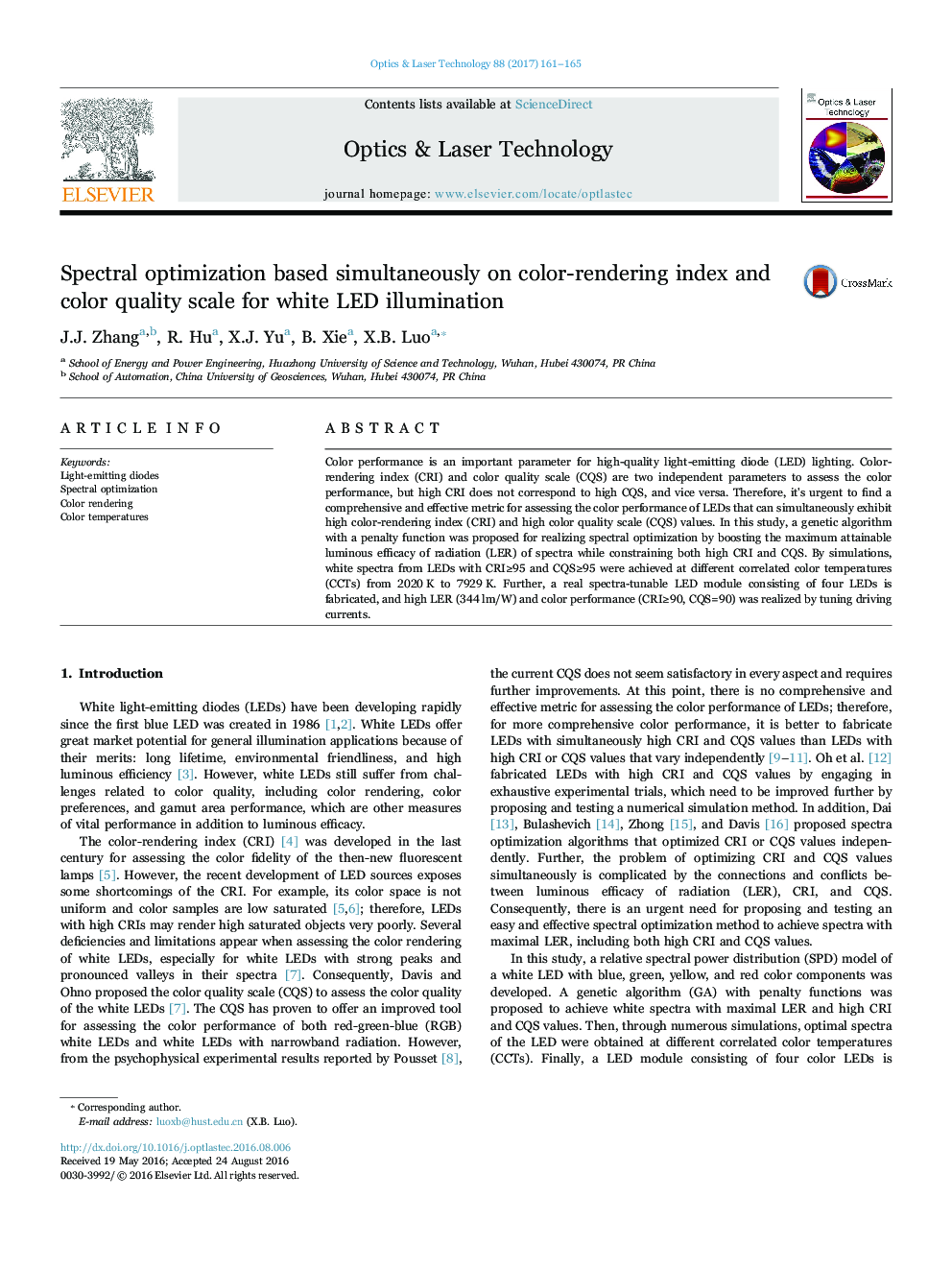| Article ID | Journal | Published Year | Pages | File Type |
|---|---|---|---|---|
| 5007600 | Optics & Laser Technology | 2017 | 5 Pages |
Abstract
Color performance is an important parameter for high-quality light-emitting diode (LED) lighting. Color-rendering index (CRI) and color quality scale (CQS) are two independent parameters to assess the color performance, but high CRI does not correspond to high CQS, and vice versa. Therefore, it's urgent to find a comprehensive and effective metric for assessing the color performance of LEDs that can simultaneously exhibit high color-rendering index (CRI) and high color quality scale (CQS) values. In this study, a genetic algorithm with a penalty function was proposed for realizing spectral optimization by boosting the maximum attainable luminous efficacy of radiation (LER) of spectra while constraining both high CRI and CQS. By simulations, white spectra from LEDs with CRIâ¥95 and CQSâ¥95 were achieved at different correlated color temperatures (CCTs) from 2020 K to 7929 K. Further, a real spectra-tunable LED module consisting of four LEDs is fabricated, and high LER (344 lm/W) and color performance (CRIâ¥90, CQS=90) was realized by tuning driving currents.
Related Topics
Physical Sciences and Engineering
Engineering
Electrical and Electronic Engineering
Authors
J.J. Zhang, R. Hu, X.J. Yu, B. Xie, X.B. Luo,
